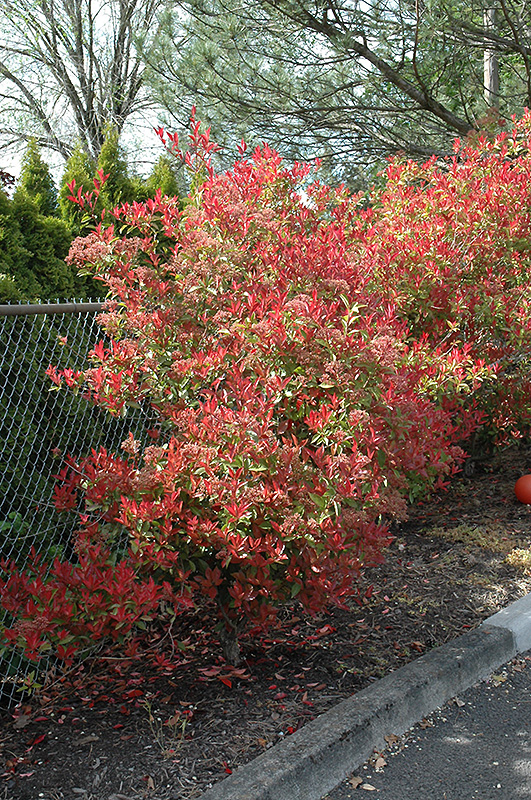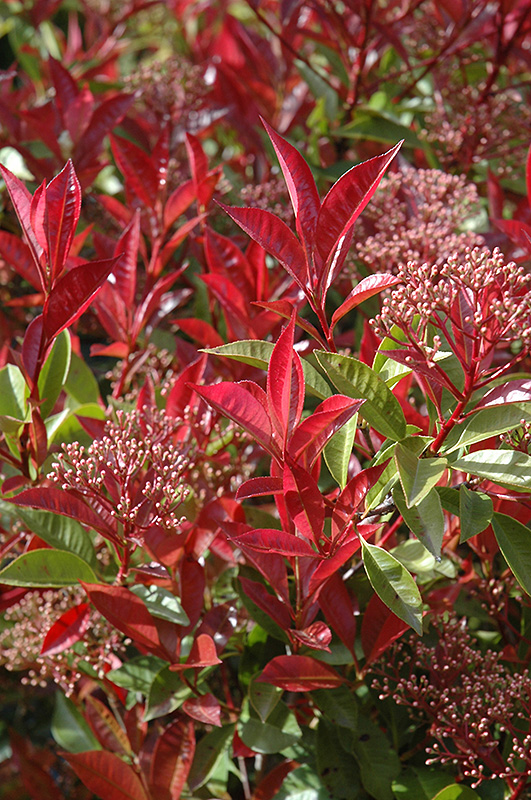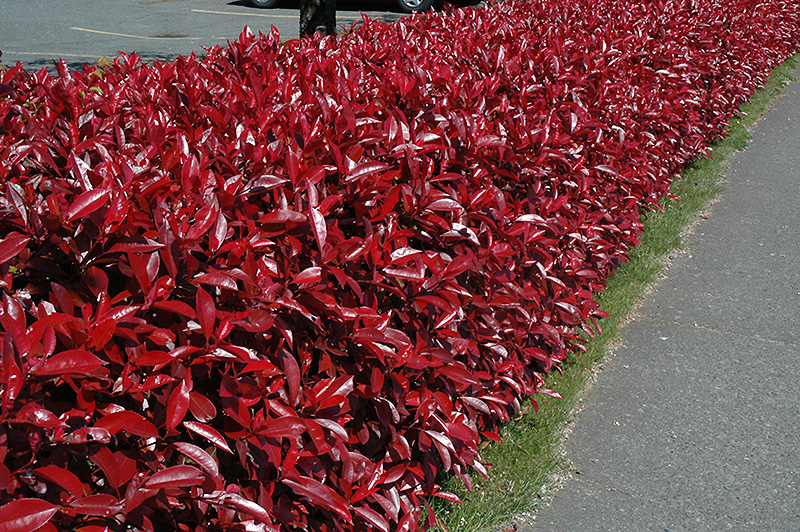Height: 12 feet
Spread: 7 feet
Sunlight:
![]()
![]()
![]()
Hardiness Zone: 6
Description:
One of the mainstay shrubs for today's urban landscapes, this ubiquitous hedge plant features unmistakable rich red foliage in spring that fades to dark green; pruning stimulates new reddish growth over the season; flowers are pretty when not pruned out
Ornamental Features
Fraser Photinia is clothed in stunning clusters of white flowers with yellow anthers held atop the branches from early to mid spring. It has attractive dark green evergreen foliage which emerges brick red in spring. The glossy narrow leaves are highly ornamental and remain dark green throughout the winter. The fruits are showy red pomes carried in abundance from mid to late fall.
Landscape Attributes
Fraser Photinia is a multi-stemmed evergreen shrub with an upright spreading habit of growth. Its relatively coarse texture can be used to stand it apart from other landscape plants with finer foliage.
This shrub will require occasional maintenance and upkeep, and should only be pruned after flowering to avoid removing any of the current season's flowers. It is a good choice for attracting birds to your yard. It has no significant negative characteristics.
Fraser Photinia is recommended for the following landscape applications;
- Mass Planting
- Hedges/Screening
- General Garden Use
Planting & Growing
Fraser Photinia will grow to be about 12 feet tall at maturity, with a spread of 7 feet. It tends to be a little leggy, with a typical clearance of 1 foot from the ground, and is suitable for planting under power lines. It grows at a fast rate, and under ideal conditions can be expected to live for 40 years or more.
This shrub performs well in both full sun and full shade. It is very adaptable to both dry and moist growing conditions, but will not tolerate any standing water. It may require supplemental watering during periods of drought or extended heat. It is not particular as to soil type or pH. It is highly tolerant of urban pollution and will even thrive in inner city environments. Consider applying a thick mulch around the root zone in both summer and winter to conserve soil moisture and protect it in exposed locations or colder microclimates. This particular variety is an interspecific hybrid.



